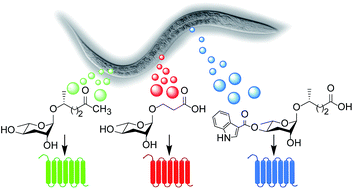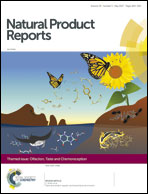Decoding chemical communication in nematodes
Abstract
The nematode Caenorhabditis elegans produces tens, if not hundreds, of different ascarosides as pheromones to communicate with other members of its species. Overlapping mixtures of these pheromones affect the development of the worm and a variety of different behaviors. The ascarosides represent a unique tool for dissecting the neural circuitry that controls behavior and that connects to important signaling pathways, such as the insulin and TGFβ pathways, that lie at the nexus of development, metabolism, and lifespan in C. elegans. However, the exact physiological roles of many of the ascarosides are unclear, especially since many of these pheromones likely have multiple functions depending on their concentrations, the presence of other pheromones, and a variety of other factors. Determining these physiological roles will be facilitated by top-down approaches to characterize the pheromone receptors and their function, as well as bottom-up approaches to characterize the pheromone biosynthetic enzymes and their regulation.

- This article is part of the themed collection: Olfaction, Taste and Chemoreception


 Please wait while we load your content...
Please wait while we load your content...